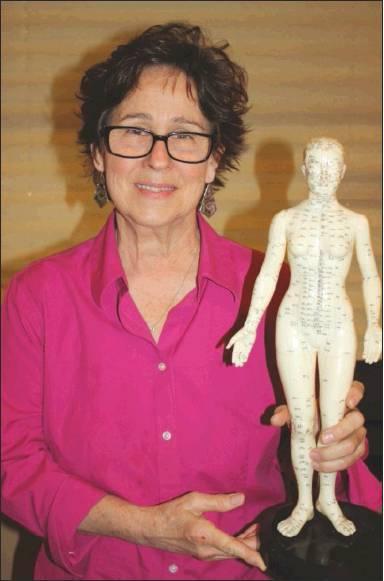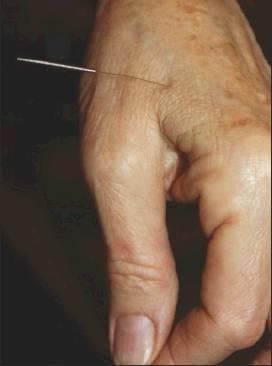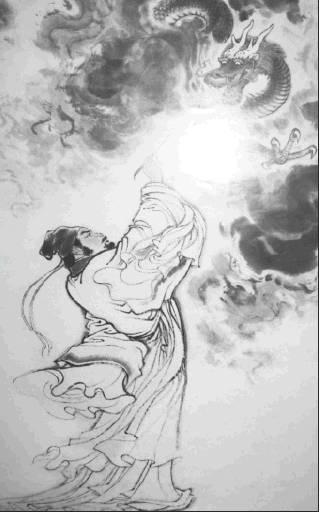A pinch and a prick: Acupuncture in Wimberley
One of the first things most people want to know about acupuncture is: Does it hurt?
The answer is no. In fact, you barely feel the needles — which are not much bigger than a strand of hair — pierce your skin. And, they only go in an eighth of an inch or so.
Carol Kelly, owner of Wimberley Acupuncture, is a state Licensed Acupuncturist and Chinese Herbalist. Over the years she has inserted thousands of stainless steel needles into thousands of patients. She’s treated people for allergies, sore backs, hypertension, pulmonary problems, insomnia, and much more in her office at 304 Cypress Creek Lane in Wimberley.
For the record, the definition of acupuncture goes something like this: A medical technique that involves pricking the skin with needles that is used to alleviate pain and treat various physical, mental and emotional issues.
The practice is thought to have originated in China as early as the second century BC. The technique was spread to Europe by Jesuit missionaries in the 16th and 17th centuries. Acupuncture appeared in U.S. medical journals in the mid-1800s and gained widespread interest in 1971 when an American reporter, covering the historic ping-pong match in Beijing between the United States and China, developed appendicitis. After an emergency appendectomy, his pain was managed with acupuncture and his story was published on the front page of the New York Times.
First a nurse
Carol has been practicing acupuncture since 2002. Prior to that she got her nursing degree and became a registered nurse working in the ICU. She then moved to the home health care field and opened her own medical-consulting firm. She developed a pinched nerve in her neck and tried acupuncture. “After the first treatment I was pain free for the first time in five months,” says Carol. “It was very interesting to me so I just got involved in it. Besides I was looking for something else to do and tired of banging my head against corporate America.”
She enrolled at the Academy of Oriental Medicine in Austin (today it’s known as the AOMA Graduate School of Integrative Medicine). It takes four years and thousands of hours of classroom and clinical work to earn a state license. Acupuncture is just a part of traditional Chinese medicine that includes practices such as massage, herbal medicine, acupressure and moxibustion, the burning of herbs above the skin at certain pressure points on the body.
Carol feels her training as a nurse dovetails nicely with her Chinese medical techniques. “I am really clear about when someone comes to me whether they need to see a doctor and when acupuncture will help,” she says. Likewise, a number of local physicians routinely refer patients to Carol’s practice.
When a potential patient comes in she makes sure his or her doctor is on board with acupuncture. “The doctors around here are generally receptive,” she says.
She does an in-depth new patient assessment to evaluate pain and other symptoms.
Wimberley Acupuncture’s treatment room features soothing Asian music, Chinese art and mood lighting. A typical session lasts an hour and some patients require 10 needles while others might need 40. The needles just barely break the skin at any of 365 pressure points on the body. Carol has a small tube-like device that makes sure the needles go in the proper depth. Sometimes Carol will manipulate the needles slightly to stimulate the treatment. “Acupuncture allows the body a free flow of energy and blood,” she explains.
According to the ancient Chinese models, the nerve channel of an ailment reaches all over the body. For example, needles might be inserted in the arms to treat a pulmonary disorder. Treatment for a gall bladder issue might start in the feet.
Swears by acupuncture
In a typical week, she might see 30 people. “Most of the patients I have, I have been seeing for 10 or 15 years,” she says.
One of those patients, Mike Sullivan, swears by acupuncture. Now retired, Mike was a salesman for 40 years and logged hundreds of thousands of miles on the road. He suffered from sciatica with back pain affecting the entire right side of his body. His chiropractor suggested he try acupuncture and it changed his life. “Relief came very quickly,” Mike recalls. “Within a month — two or three treatments — I had enormous relief. I am not nearly as troubled as I was before.”
With her nursing training, Carol has become, in effect, his primary-care physician, Mike says with a chuckle. He goes in for treatment every couple weeks and she lets him know when he needs to see a doctor.
The initial assessment runs $100. Follow-up treatments are $85 a session. Kids are $60. Some insurance plans will partially cover the cost of acupuncture.
She notes Wimberley is fortunate to have three or four licensed acupuncturists in town.
During allergy season patients flock to her. When the pollen falls, 60 percent of her clientele are seeking allergy relief.
As an herbalist, Carol creates a potion of various herbs that aid allergies as well as mixtures that support the immune system and battle stress.
“Acupuncture and Chinese herbalism go hand in hand,” says Carol. “It’s both an art and a science. Every provider is a little different.”




